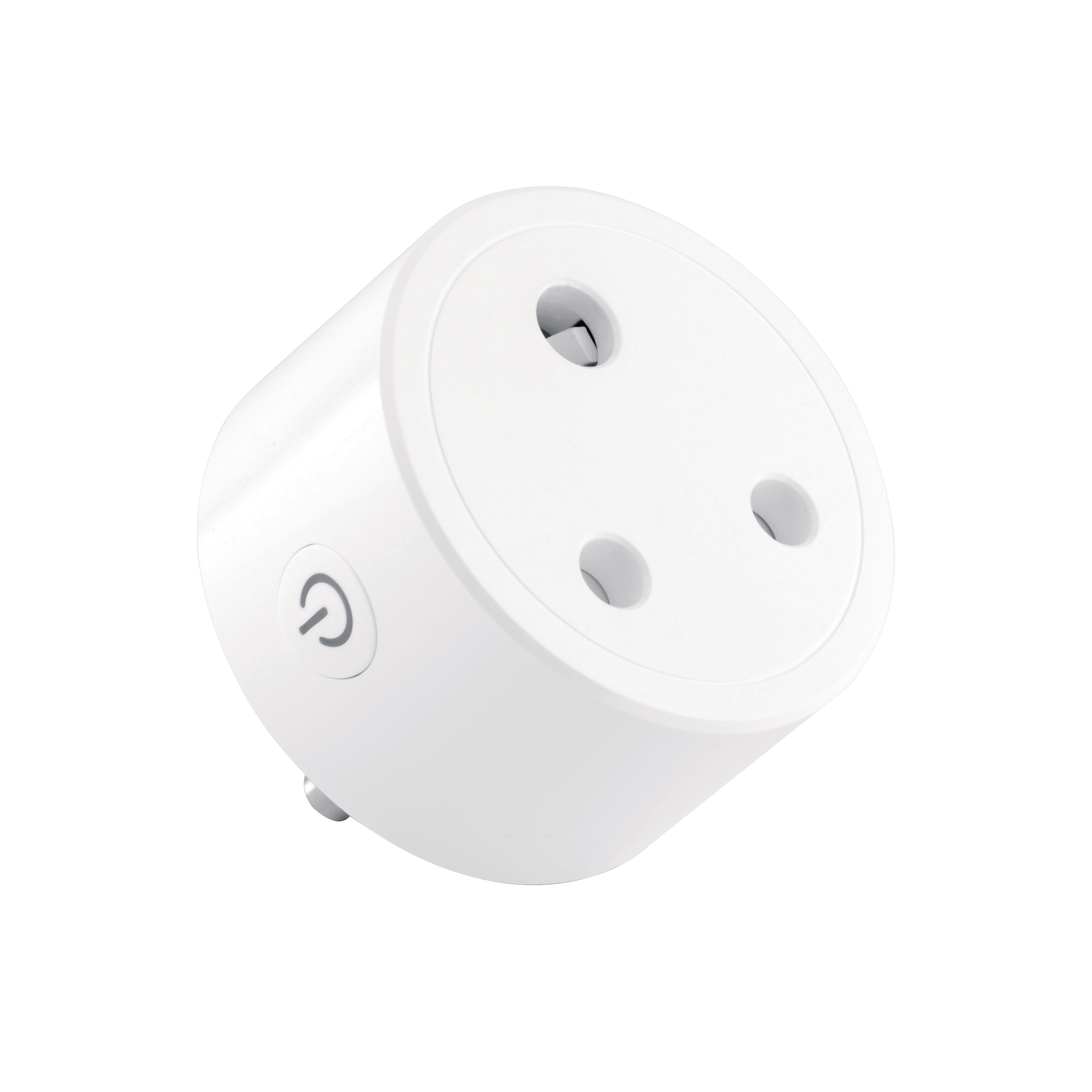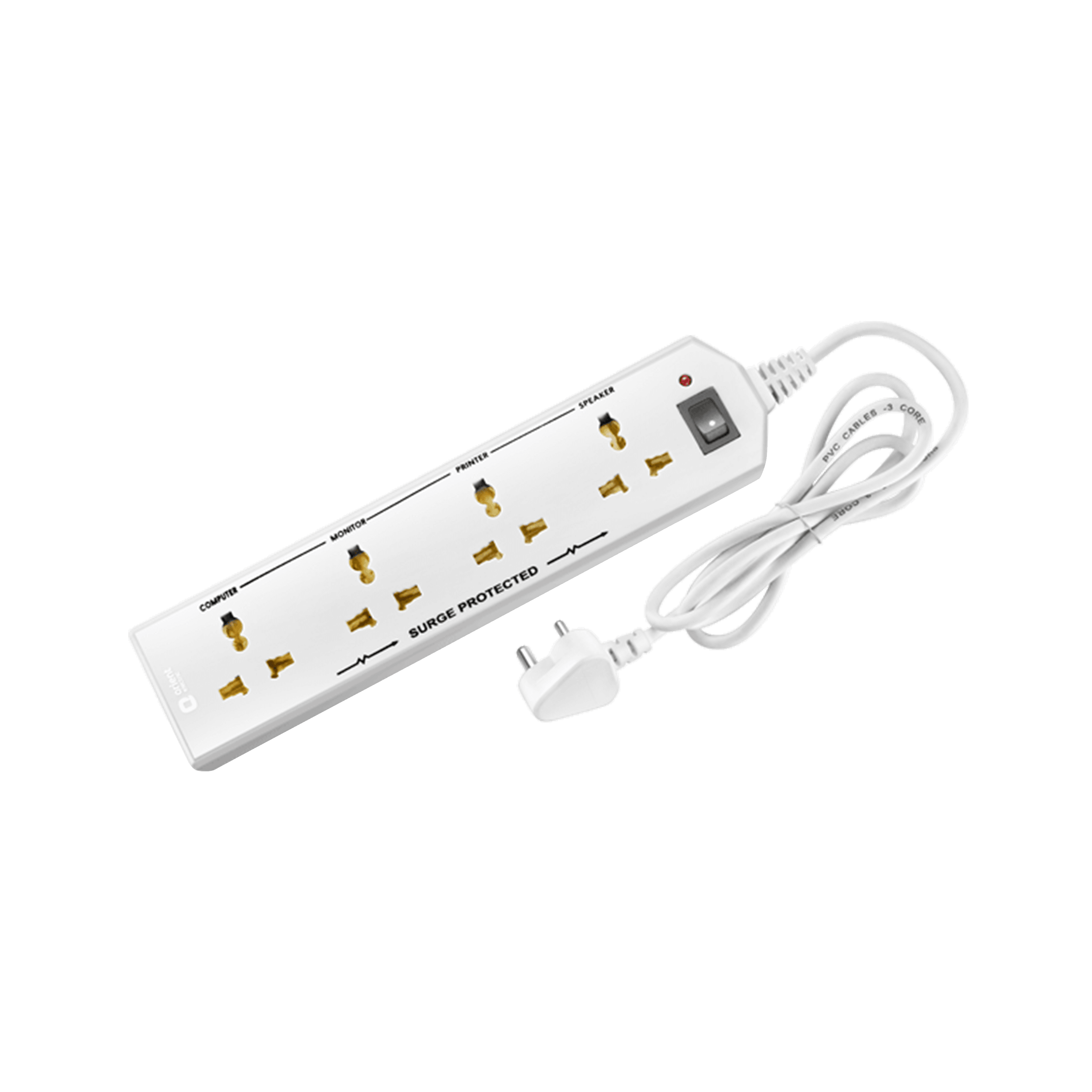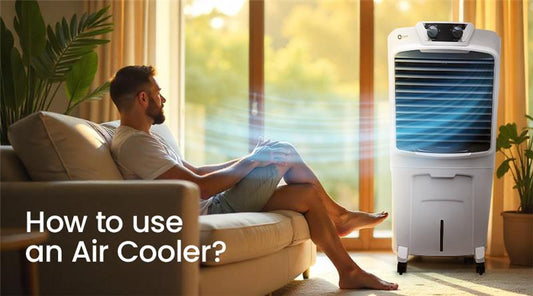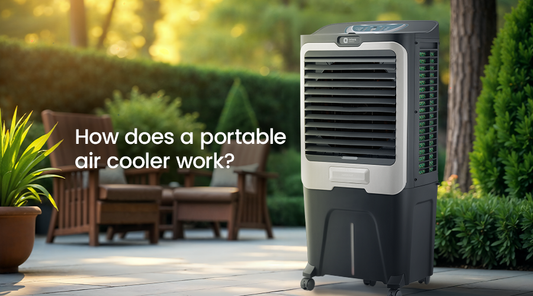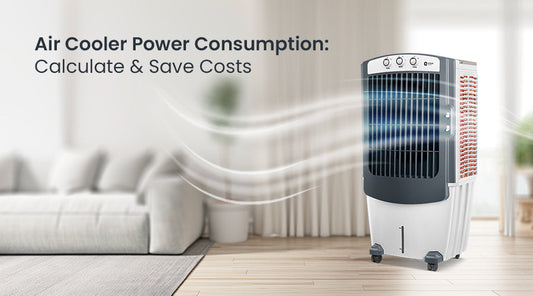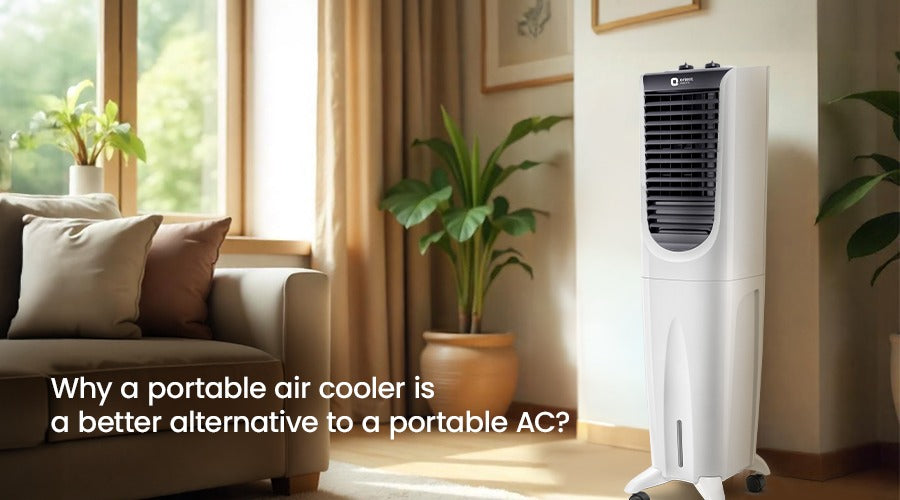
Portable AC vs. Portable Air Cooler – Which One is Better?

When it comes to cooling solutions, portable air conditioners (ACs) and portable air coolers are two popular options. While both offer relief from heat, they work on entirely different principles and serve different needs. Understanding their differences in cooling capacity, power consumption, health benefits, portability, and cost will help you make an informed decision.
This article provides a detailed comparison of portable ACs and portable air coolers, helping you choose the best one for your space and requirements.
Understanding the Basics: What Are They?
Portable Air Conditioner
A portable AC is a compact, standalone air conditioning unit that works similarly to traditional air conditioners. It uses a compressor and refrigerant to remove heat from the air and cool it down before circulating it back into the room. These units require an exhaust hose to vent hot air outside.
Portable Air Cooler
A portable air cooler, also known as an evaporative cooler, works by pulling in warm air, passing it through water-saturated cooling pads, and then releasing cool, moist air. Unlike an AC, it does not use refrigerants or compressors, making it more energy-efficient and eco-friendly. However, it is most effective in dry climates where humidity is low.
What are the Main Key Differences Between Portable AC and Portable Air Cooler?
| Features | Portable Air Conditioner | Portable Air Cooler |
|---|---|---|
| Cooling Mechanism | Refrigerant-based cooling | Evaporative cooling (water-based) |
| Temperature Reduction | Can significantly lower temperature | Cools air moderately |
| Best For | High humidity, enclosed rooms | Dry, well-ventilated spaces |
| Power Consumption | High (900W – 1500W) | Low (80W – 200W) |
| Energy Efficiency | Less energy-efficient | Highly energy-efficient |
| Humidity Effect | Reduces room humidity | Increases room humidity |
| Air Quality | Filters air but can dry it out | Adds moisture to the air |
| Health Impact | May cause dryness, sore throat | May develop mold if not cleaned |
| Noise Level | Generally higher due to compressor | Low-noise operation |
| Installation | Requires an exhaust hose | No installation required |
| Mobility | Heavy and requires venting | Light-weight and easy to move |
| Maintenance | Requires refrigerant and filter cleaning | Requires water refilling and cleaning filters |
| Initial Cost | Expensive | Affordable |
| Running Cost | High (electricity bills) | Low |
Power Consumption & Energy Efficiency
Portable ACs consume significantly more power compared to air coolers. Depending on the model, a portable AC can use between 900W to 1500W per hour, leading to high electricity bills. In contrast, portable air coolers operate on as little as 80W to 200W per hour, making them much more energy-efficient.
If you are looking for a cooling solution that saves electricity and reduces operational costs, a portable air cooler is the better option.
Cooling Efficiency & Performance
Portable ACs offer better cooling performance as they can lower temperatures significantly, even in enclosed and humid environments. They work by extracting heat from the air, making them suitable for areas where moisture levels are high.
Portable air coolers work best in dry climates where humidity levels are low. They do not refrigerate air but instead create a cooling effect through water evaporation. The efficiency of an air cooler depends on airflow and ventilation, and it may not work effectively in humid conditions.
If you need powerful cooling in a closed space, a portable AC is the better choice. If you are in a dry region and want a more natural, energy-efficient cooling solution, an air cooler will be more effective.
Health Benefits and Concerns
Portable AC
Portable ACs filter air, which helps remove dust and allergens, making them beneficial for people with allergies. However, they also dry out the air, which can lead to skin irritation, dry eyes, and throat discomfort.
Portable Air Cooler
Air coolers increase humidity, making them beneficial for people who experience dry skin or respiratory issues. However, if not maintained properly, they can develop mold and bacteria, which can affect air quality and cause respiratory problems.
For individuals who prefer humidified air and suffer from dryness, an air cooler is a better option. Those who need filtered, dry air may find a portable AC more suitable.
Noise Levels
Portable ACs tend to be noisier due to their compressor and fan system. The noise level varies based on the model but can be disruptive, especially in bedrooms.
Portable air coolers operate quietly as they only use a fan and a water pump. If noise is a concern, an air cooler is the better choice for a quieter environment.
Portability and Convenience
Portable ACs require proper venting, making them less mobile despite their compact size. The presence of an exhaust hose limits their portability within a home.
Portable air coolers, on the other hand, are lightweight, easy to move, and require no installation. They can be placed in any room and repositioned easily, making them more convenient for users who want flexible cooling solutions.
If mobility is a priority, a portable air cooler is the better option.
Installation & Maintenance
Portable AC
A portable AC requires an exhaust hose to vent hot air outside. It also needs regular cleaning of filters and periodic refrigerant checks to ensure proper functioning.
Portable Air Cooler
A portable air cooler does not require installation. It only needs periodic cleaning of the water tank and cooling pads to prevent odor and mold buildup.
If you prefer a low-maintenance option, an air cooler is the better choice.
Cost Comparison
Initial Cost
-
Portable ACs range between ₹25,000 to ₹50,000.
-
Portable air coolers are more affordable, typically costing between ₹5,000 to ₹15,000.
Running Cost
-
Portable ACs consume more electricity, leading to high power bills.
-
Portable air coolers use significantly less power, making them economical for long-term use.
For budget-conscious buyers, a portable air cooler is the more cost-effective option.
Which One Should You Choose?
Choose a Portable AC if:
-
You live in a humid area.
-
You need strong cooling for a closed space.
-
You are okay with higher electricity bills.
-
You can set up an exhaust vent.
Choose a Portable Air Cooler if:
-
You live in a dry climate.
-
You want an energy-efficient and eco-friendly cooling solution.
-
You prefer a humidified environment.
-
You need a lightweight and easily movable cooling option.
Conclusion
Both portable ACs and air coolers have their advantages and limitations. If you need high-powered cooling and live in a humid area, a portable AC is a better choice. However, if you prefer an affordable, eco-friendly, and portable cooling solution for a dry climate, a portable air cooler is the ideal option.
Understanding your cooling needs will help you make the right decision based on energy efficiency, cost, and overall convenience.
FAQs
Does a portable AC cool better than a portable air cooler?
Yes, portable ACs can cool a room more effectively than an air cooler, especially in humid regions. Air coolers work best in dry climates and are more energy-efficient.
How often should I clean my portable air cooler?
It is recommended to clean the cooling pads every two to three weeks and empty the water tank regularly to prevent mold growth.
Which one is more energy-efficient?
Portable air coolers are significantly more energy-efficient, consuming only 80-200W compared to the 900-1500W required by portable ACs.
What factors should I consider before buying a portable cooling device?
Consider factors such as room size, power consumption, cooling capacity, humidity levels, and maintenance requirements before making a purchase.
